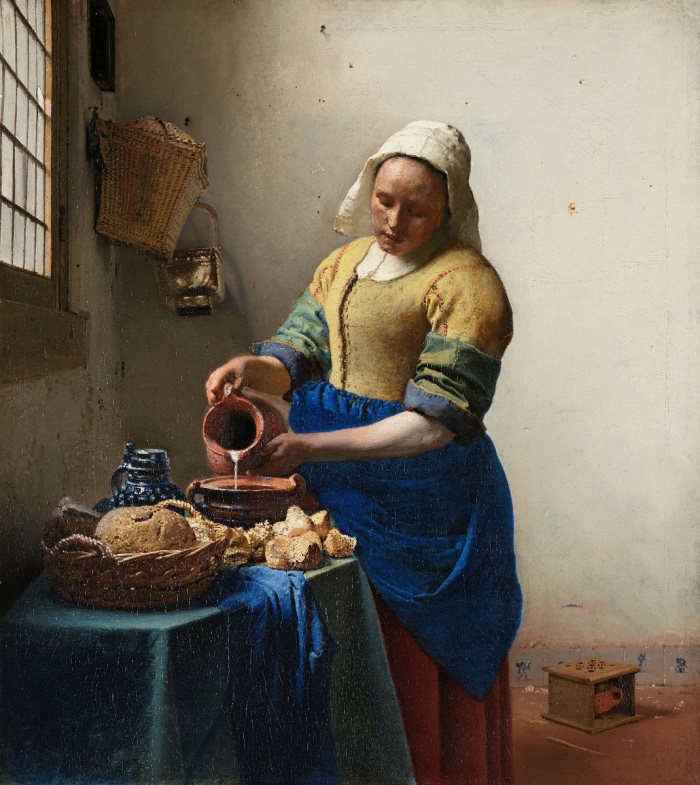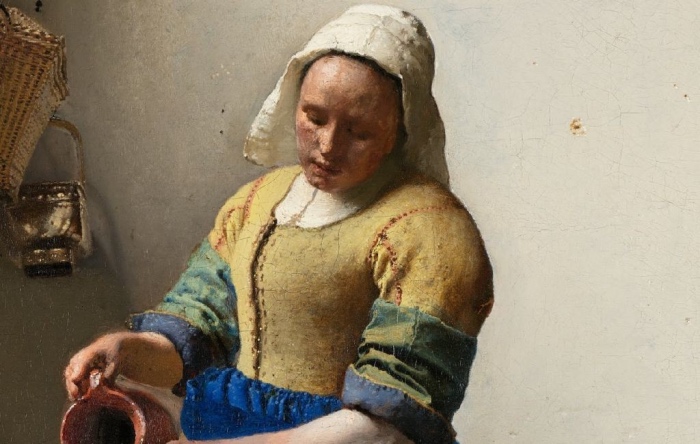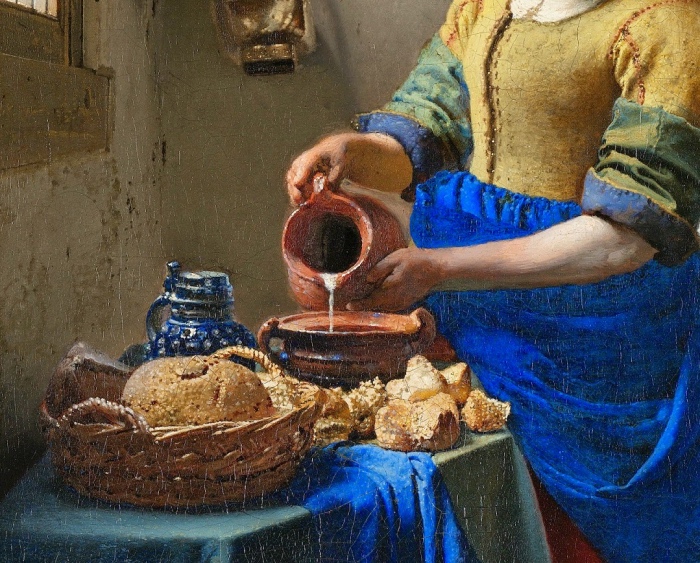Vermeer’s Milkmaid: description and meaning of the painting

VERMEER’S MILKMAID: DESCRIPTION AND MEANING OF THE PAINTING
What does Vermeer’s Milkmaid represent? A maid pouring some milk from a jug, you may say!
The question may be insignificant, but is that which makes this painting a masterpiece?
In this post I’ll try to answer this question, being aware that this is a painting arousing several feelings and emotions.
For example, what do you feel in front of this painting? Are you in ecstasy or do you remain indifferent?
Let me know your impressions in the comments. In the meanwhile read my post 🙂
Vermeer’s Milkmaid

VERMEER’S MILKMAID: DESCRIPTION
Vermeer’s Milkmaid is a fragment of ordinary life made immortal on the canvas.
The painting portrays a poor and bare room where a woman is pouring some milk from a jug.
The subject of this painting is not the woman, but rather the gesture she is making, that is to say pouring the milk. A simple and ordinary gesture but described in a poetic way.
Each detail is represented with precision.
The basket and the pieces of bread, the light-blue fabric, the vase and the terracotta container, the ceramic tiles and the stains on the wall are precise details, necessary for making an everyday gesture realistic.
WHY VERMEER PAINTED THE MILKMAID AND WHERE TO FIND THE ARTWORK
Vermeer’s Milkmaid is a simple painting.
In this painting there are neither heroes, gods, great military rulers, nor a princess to admire for her beauty nor a still life.
It seems that behind a banal fragment of everyday life there’s a deeper meaning.
It would be useless to try to look for some clues as to the meaning of the painting or about who commissioned it.
Little is known about the artist and Vermeer didn’t leave any useful document to understand his works. Therefore, we have to rely on what we see and few elements we know about his life.
To admire Vermeer’s Milkmaid, you have to visit the Rijksmuseum in Amsterdam. To book admission and skip the queue, go to the page with information and the link to book admission to the Rijksmuseum.
WHY VERMEER’S MILKMAID IS A MASTERPIECE
Vermeer is an artist of ordinary life, whose setting is interiors of Dutch houses, and his most beautiful paintings are all set in domestic spaces, where it seems that life goes on quietly.
As often happens in Vermeer’s paintings, also in Vermeer’s Milkmaid, light comes from a window and contributes to create the volumes of each element and the effect of depth.
It’s his attention to details that makes Vermeer’s Milkmaid marvellous, and together with the light transforms it into a masterpiece.
There is neither pomp nor abundance of objects, but only few and perfects elements, but the secret of Vermeer’s Milkmaid is light.
In fact it is the light to lead the eye, and your glance rests on anywhere and in particular on the woman’s face, on her arm holding the jug, on pieces of bread, on the wall of the room and everything else. But, by contrast, it’s the inside of the jug that catches our attention.
Right where the light doesn’t enter we try to observe, in order to look at that rivulet of white milk while is poured.
Vermeer’s great masterpiece is a portrait, also called the Giocondo of the Mauritshuis museum in The Hague. To know all about the work read the post The Girl with a Pearl Earring: 5 things to know
Follow me on:
About me
In this blog, I don't explain the history of art — I tell the stories that art itself tells.



